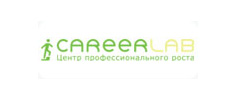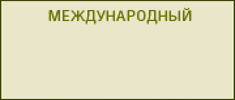List articles
|
The article deals with the problem of a limited access to the venture financing for the early stage
technology startups (so called «Death Valley» companies) which results in the industry monopolization
by several large players despite a significant economic potential of alternative technology
solutions and niche products. The author demonstrates that venture funds maximizing the return
on their investments typically prefer to invest only in potential market leaders. While following such
investment strategy the investors typically use a set of standard operational KPIs which might
inadequately forecast the future development of the business. Besides the investor’s expectation
with respect to the anticipated market structure and therefore the advantages of the leader’s position
vs. the followers might be inaccurate. However, given that early stage startups have almost
no access to alternative sources of funding, the strategies of venture investors might result in the
depletion of smaller players and eventually technology monopolization, which has been proved by
several examples on the Russian internet market. The problem might escalate sue to the significant
influence of investor’s sentiment (i. e. the expert opinion of other venture market’s players on the
project’s potential) on the venture fund’s decision-making process.
Continue...
|
|
|
The article deals with the system of management of competitive action. The author describes the
place of the competitive action management in the overall enterprise management system, consistently
reveals all the main components of competitive action management, such as: competitive
analysis and audit tools of competitors, target planning of competitive action, the establishment
of competitive dispositions, predicting the response of competitive action, the selection of competitive
«field», resource and organizational providing of competitive action, the control of execution
of competitive actions, the competitive motivation.
The author describes a typical set of techniques of simple and weighted comparison of competitors,
suggests ways of formation of vectors of competitive differences, methods of making a competitive
maps of market, and a number of other instruments of competitive management.
The article also describes the characteristics of competitive actions that are meaningful in their
planning phase: effectiveness, strength, quality, speed, intensity, stability of competitive action.
The author also describes the main areas of competitive motivation of employees of the company:
strengthening of personal competitiveness, inspiration of competitive self-management and competitive
self-motivation.
Continue...
|
|
|
The article reveals the variety of types of benchmarking relationships. Based on criteria of «number
of participants» and «structure of benchmarking» authors identify: active and passive positions,
role function of benchmarking participants, types of multilateral benchmarking relations.
The authors note the specificity of determining the object of benchmarking and emphasize dependence
of the stages of benchmarking from industry content of benchmarking object.
The paper defines benchmarking as an combination of competitive action for the identification and
implementation of new competitive actions. The paper reveals elements of the system of management
of competitive action that could been using as an objects of benchmarking.
The authors propose to use a special form of mixed benchmarking — benchmarking of competitive
activities of companies in the competitive disposition, and identify factors providing positional
superiority over rival in the competitive disposition.
Continue...
|
|
|
The slowdown in the growth of the market increases competition among the companies of the IT
sphere. It makes market players create new competitive advantages.
Small innovative companies bring large input in the development of IT industry. They design and
launch new creative ideas. However such companies take high risk of failure, caused by different
factors. It is essential for economy to maintain such companies. That is why it is essential for
them to understand how to get a sustainable competitive advantage in the turbulent environment.
Surveys show that managerial skills and know-how are the strongest sustainable competitive advantages
for such companies.
Small innovative companies from IT sphere in Nizhny Novgorod were studied in 2013. Their sustainable
competitive advantages were analyzed. Findings show peculiarities of such an activity for
new companies in this sphere; it can allow them to be more competitive and to occupy stronger
position on the market.
Nizhny Novgorod was chosen for research due to high level of socio-economic and innovation
development indicators. Findings are based on the structured interviews with representatives of
15 small IT companies in Nizhny Novgorod.
Small innovative companies from IT sphere in Nizhny Novgorod pay more attention to the product
diversification based on the quality increase of client service. Clients are the most useful source
of information in innovation process and in product adaptation. Personnel as key resource are attracted
from competitors by interesting projects. Informal environment within the company is used
for retaining key staff. Companies invest in designing of new product. In that case an image and
reputation of the company make stronger the sustainability of its competitive advantage.
Continue...
|
|
|
Widely used in the antitrust laws Herfindahl–Hirschman Index evaluates the level of market concentration.
However, it fails to say whether the share of one or more firms is so high that it leads to
high monopoly prices. This encourages researchers to propose new methods of assessing the level
of market power. The article deals with one of these new criteria proposed by Melnik A., Shy O.,
Stenbacka R. In contrast to Hirschman–Herfindahl index characterizing concentration measure
of the industry a new measure helps to determine whether the firm has a dominant position. Undeniable
advantages criterion is that its use requires only the shares of the two largest players in
the market and that it takes into account the characteristics of the market such as entry barriers.
Markets are characterized for which the criterion for dominance and the Herfindahl — Hirschman
index give different assessment of the competitive environment. Both indicators are used to assess
competition level for Russian coal market. Russian coal market is described to the extent
necessary for the task. Some aspects and restrictions of terms «geographic market» and «product
market» are revealed.
Continue...
|
|
|
The urgent need to prepare the Russian version of Guidelines on vertical restraints (the analog
of very detailed EU Guidelines) requires intense efforts. In particular, it is necessary to define and
to describe many types of vertical restraints that are not mentioned in Russian antitrust law now
(the list contains only the maximum/minimum resale price maintenance, exclusive territories, fixed
payments for access to the distribution network).
The first part of the article discusses the basic types of vertical restraints and their classification
criteria used in theoretical literature. The second part of the article is dedicated to the description
of vertical restraints mentioned in EU Guidelines on Vertical Restraints. This document pays attention
not only to basic types of vertical restraints, but also to much more complicated distribution
systems. In the third part of the article the possible classifications of these types of vertical
restraints are considered.
Continue...
|



